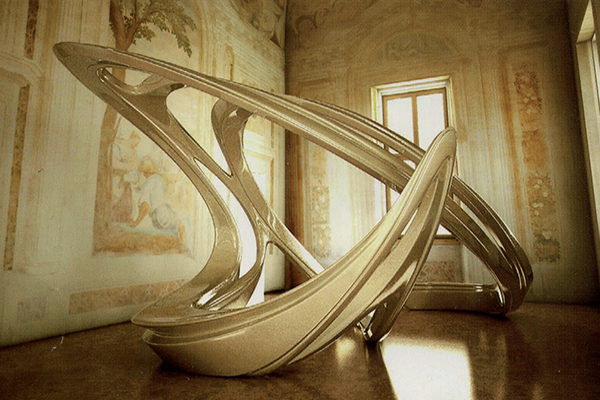Topological fluid architecture: is it really architecture?
DOI:
https://doi.org/10.15168/xy.v1i1.18Abstract
Topological architecture and fluid architecture are a reality of our times. New digital technologies and new construction techniques, combined with the use of new architectural shapes derived from the latest studies of modern and contemporary mathematics, have profoundly changed the idea of architecture. There always has been an important relationship between mathematics and architecture, from ancient Greece to modern times. The new ideas of space and new geometries have helped to model the idea of space in architecture. It is a long story that continues. It is a strong tradition in the history of architecture. From the point of view of mathematics it is a matter of great interest, although many architects, mostly those linked to history and tradition, think that contemporary topological and fluid architecture is simply not architecture, forgetting that the traditional links between mathematics and architecture change as mathematics and the idea of space change.
References
BURRY, J., BURRY, M., 2010. The New Mathematics of Architecture. London: Thames & Hudson, pp. 256.
DI CRISTINA, G., 1999. Architettura e topologia: per una teoria spaziale dell’architettura. Roma: Università Sapienza, Editrice Librerie Dedalo, pp. 116.
DI CRISTINA, G., 2001. The Topological Tendency in Architecture. In DI CRISTINA, G. (a cura di), Architecture and Science. Chichester: Wiley–Academy, pp. 6–13.
EMMER, M., 2011. Architettura topologica fluida. In BARTOCCI, C. (a cura di), La matematica. Suoni, forme, parole. Torino: Einaudi, pp. 469–487.
EMMER, M., 2004. Mathland: from flatland to hypersurfaces. Basel: Birkhauser, pp. 93.
FORSTER, K. W., 2004. Architettura Ombre Riflessi. In FORSTER, K. W., BALTZER, N. (a cura di), Metamorph. Focus. Catalogo della 9° Mostra Internazionale di Architettura. Venezia: Marsilio, pp. 6–13.
GALILEI, G., 1623. Il saggiatore. The assayer (pp. 231–280). Stillman Drake. 1957. [visitato 23 aprile 2016]. Disponibile da: https://www.princeton.edu/~hos/h291/assayer.htm. In DRAKE, S., 1957. Discoveries and Opinions of Galileo. New York: Doubleday & Co., pp. 302.
GREGOTTI, V., 2011. Discipline liquefatte. Alfabeta2. 12, supplemento Alfalibri 4, 2011, p. 4.
HADID, Z., 2009. MAXXI. Museo nazionale delle arti del XXI secolo. 2002. [visitato 23 aprile 2016]. Disponibile da: www.fondazionemaxxi.it/player/zaha–hadid–maxxi–progetto.
HADID, Z., SCHUMACHER, P., 2008. Andrea Palladio and Contemporary Architects. In BETSKY, M. (a cura di), Out There. Architecture beyond Building. Vol. 4. Catalogo della 11° Mostra Internazionale di Architettura. Venezia: Marsilio, pp. 152–153.
KEMP, M., 2004. Intuizioni strutturali e pensiero metamorfico nell’arte, architettura e scienze. In FORSTER, K. W., BALTZER, N. (a cura di), Metamorph. Focus. Catalogo della 9° Mostra Internazionale di Architettura. Venezia: Marsilio, pp. 31–43.
KLINE, M., 1953. Mathematics in Western Culture. New York: Oxford University Press, pp. 484. Ed. it. 1976. La matematica nella cultura occidentale. Milano: Feltrinelli editore, pp. 458.
IMPERIALE, A., 2000. New Flatness: Surface Tension in Digital Architecture. Boston: Birkhauser, pp. 96. Ed. it. 2001. Nuove bidimensionalità. Tensioni superficiali nell’architettura digitale. Torino: Testo & Immagine, pp. 93.
POINCARÈ, J. H., 1902 (rist. 1968). La science et l’hypothèse. Paris: Flammarion, pp. 292. Ed. it. SINIGAGLIA, C. (a cura di), 2003. La scienza e l’ipotesi. Testo a fronte. Milano: Bompiani 2003, pp. 432.
STEWART, I., 1995. Nature’s Numbers: Discovering Order and Pattern in the Universe. London: Weidenfeld and Nicolson, pp. 164.


